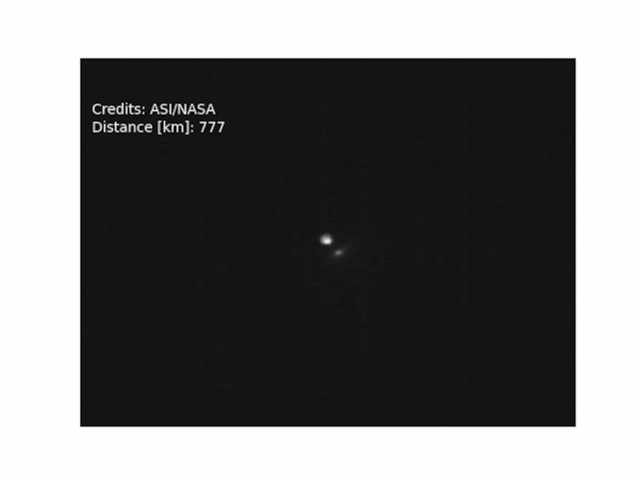 |
| ASI/NASA |
Now in a latest, a high school teacher and his students have discovered that an asteroid hit by a NASA spacecraft, in a test run for saving Earth from a collision, is behaving unexpectedly. The find could have implications for future planetary defence missions.
DART, which was the size of a golf CART and worth $300 million, collided with a Great Pyramid-sized asteroid 'Dimorphos'. The impact caused the asteroid's orbit around another space rock (Dydymos) to shrink — Dimorphos now completes an orbit 33 minutes faster than before the crash of DART.
The goal of DART was to slow the space rock's nearly 12-hour orbit around a parent asteroid, called Didymos, and see if the momentum of the spacecraft could alter the asteroid's trajectory. The mission was successful, with Dimorphos' orbit shortening by 33 minutes in the weeks after the collision.
However, according to a new research, Dimorphos' orbiting time has decreased by another full minute compared to NASA's numbers, New Scientist reported.
Jonathan Swift, a math and science teacher at the Thacher School, and his students conducted a research from September to November 2022. The research study said the asteroid's orbital period, initially 11 hours 55 minutes, has decreased by 34 minutes. His team presented their findings at a meeting of the American Astronomical Society in New Mexico in June, receiving positive responses.
One of the theories to prove the Asteroid's unexpected behavior suggests that Dimorphos was once tidally locked to its parent rock 'Didymos' , meaning, like Earth's moon, the same side of the satellite always faced its host. However, the DART mission might have changed its alignment, causing Dimorphos to tumble around as the system's tidal forces changed its orbit. If this theory is true, Dimorphos will likely settle back into a tidally locked state over time, a DART team member said.
NASA will also be releasing a report soon on the DART mission's latest update, a spokesperson told New Scientist. The United States space agency will however needs to compete with the school teacher and his students, whose findings were shared with the American Astronomical Society, which is publishing their paper soon.
















 IndianWeb2.com is an independent digital media platform for business, entrepreneurship, science, technology, startups, gadgets and climate change news & reviews.
IndianWeb2.com is an independent digital media platform for business, entrepreneurship, science, technology, startups, gadgets and climate change news & reviews.



